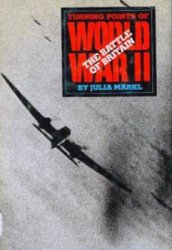Below; Japanese pilots warm up the engines of their Zero’s on the flight deck of the aircraft carrier Akagi. Their objective — Pearl Harbor. Opposite top; Wheeler Field, Pearl Harbor. 0800 hours, 7 December 1941. Opposite bottom: The US fleet around Ford Island in Pearl Harbor was like a flock of sitting ducks.
As Japan’s military leaders prepared for war with the United States and the other colonial powers in Asia, they realized that they could never defeat the Uni'ted States, Great Britain, and the Netherlands decisively; about the best they could hope for was a temporary victory based upon the neutralization of Allied naval forces in the Pacific and the seizure of certain territories, especially the mineral rich colonies of Malaya and the Dutch East Indies. Beyond this, a permanent solution to the Asian crisis would have to be reached through diplomacy.
Plans for an attack against the colonial powers had been prepared months before 7 December 1941 but it was not until 6 September that the proposal was formally presented to the Supreme War Council in Tokyo. This plan, conceived and articulated by Admiral Yamamoto, called for Japanese forces to launch a four phase attack against the Western allies immediately following the collapse of diplomatic efforts to settle the China tangle. During the first and second stages of the offensive, some six divisions would invade Malaya, Siam, and Burma while another three and one-half divisions would overrun Hongkong and the Philippine Islands. Phase three would see Japanese forces seize American bases in the Pacific, and in the final stage of the operation land forces would complete the occupation of British Malaya and the Dutch East Indies.
To achieve these goals, it was essential that Japanese naval superiority in the Pacific remain unchallenged. This, in turn, meant that the American fleet at Pearl Harbor had to be neutralized before it could offer an effective counter-stroke to the Japanese offensive; the Japanese would have to launch a surprise attack on fleet headquarters similar to the British raid against the Italian fleet at Taranto in 1940. Japan’s leaders understood this and accepted the risks involved, ordering preparations for the preemptive strike to be set in motion.
Anticipating the collapse of negotiations with the United States, a vast armada was gathered and committed to ‘war games’ off the coast of Japan late in September. The strike force, consisting of four fleet carriers, two light carriers, two fast battleships, three cruisers, a flotilla of destroyers, eight tankers, and a number of submarines, was ready for action against the United States when the Hull-Nomura conversations collapsed at the end of November. In fact, it was under way before Hull had replied to Japan’s ultimatum of 25 November, though had the negotiations succeeded at this point the fleet could still have been recalled.




 World History
World History









